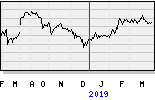
Expanding production capacity to meet growing global demand for lactic acid while simultaneously achieving Corbion's ambitious sustainability goals requires commitment, investment, new technology and discipline.
Corbion, the world’s leading supplier of lactic acid and its derivatives, is “walking the talk” in pursuit of its sustainability ambitions while taking steps to boost lactic acid production capacity. Thanks to the company’s investment in more efficient, sustainable technology, the 40% capacity increase at its Blair, Neb., plant, announced in January, will come with no increase in the site’s total energy-related CO2 emissions. In fact, upon completion of the project, the cradle-to-gate carbon footprint per ton of lactic acid produced at the Blair plant will be reduced by 9%. The plant is already powered by 100% renewable electricity.
“Growth is always exciting because it shows that we are meeting our customers' needs now, but that growth is truly sustainable only if it's achieved in a way that considers future needs, too,” said Diana Visser, Corbion’s Senior Director of Sustainability. “Our initiative at Blair demonstrates that it’s possible to produce substantially more without enlarging our energy-related carbon footprint. Ultimately, that’s an essential part of our ability to continue taking what we need from the planet while respecting its limitations.”
Manufacturers of food, home and personal care products worldwide are finding the efficacy, consumer-friendliness and sustainability advantages offered by lactic acid-based solutions – created through fermentation – to be highly valuable in responding to multifaceted market pressures. The application of these solutions brings several sustainability benefits such as the reduction of food waste, toxic solvents, antibiotics, and fossil-based materials.
In October 2019, Corbion committed to an ambitious carbon footprint reduction target of cutting one-third of its product-related emissions by 2030. The target received approval by the Science Based Targets initiative (SBTi) following a thorough validation process. In 2020, the company achieved an 11% reduction in its CO2 emissions compared to 2016.
“One reason future-focused impact investors are keeping an eye on Corbion is our commitment to growing our operations in a sustainable way,” Ms. Visser added. “They can appreciate the alignment between what we’re doing to help our customers meet consumer needs, executing our Advance 2025 strategy, and fulfilling our purpose of ‘championing preservation in all its forms.’
Corbion’s previously announced plans for construction of new production facility in Thailand include the use of new circular production technology that will reduce cradle-to-gate CO2 emissions per ton of lactic acid by 20% compared to conventional technology.
